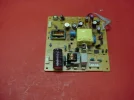seekermeister
Honorable Member
- Joined
- May 29, 2009
- Messages
- 1,496
- Thread Author
- #1
Ever since I upgraded my video card (EVGA GeForce GTX 650 Ti Boost), I haven't been able to get both of my monitors on the desktop to work the way that I want. Nothing is wrong with either monitor, but my secondary monitor is an old Dell VGA LCD, which I've only gotten to work on this card when connected to the upper DVI-I connector, but when connected in that fashion, the BIOS only displays on it, rather than my main monitor.
Since the Dell is VGA, it requires an adapter to connect to the graphics card, but the one that works in the DVI-I doesn't work in the lower DVI-D connector, because the latter doesn't permit insertion of the 4 pins around the single blade. I got one like this:
Link Removed
Which plugs in fine, and to a degree works, because the monitor seems to think it is connected, but the computer doesn't, all I get on it is a black screen. The Device Manager, Nvidia Control panel nor Ultramon see it either.
So I tried finding a DVI-I 24-1 adapter, but what I've found, the picture shows as having the 4 pins around the single blade, that I'm trying to get rid of:
Link Removed
Can someone help clear up my confusion?
Since the Dell is VGA, it requires an adapter to connect to the graphics card, but the one that works in the DVI-I doesn't work in the lower DVI-D connector, because the latter doesn't permit insertion of the 4 pins around the single blade. I got one like this:
Link Removed
Which plugs in fine, and to a degree works, because the monitor seems to think it is connected, but the computer doesn't, all I get on it is a black screen. The Device Manager, Nvidia Control panel nor Ultramon see it either.
So I tried finding a DVI-I 24-1 adapter, but what I've found, the picture shows as having the 4 pins around the single blade, that I'm trying to get rid of:
Link Removed
Can someone help clear up my confusion?
